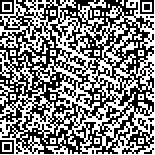|
| 定量FIT在结直肠癌机会性筛查中的应用效果分析 |
| Analysis of the Application Effect of Quantitative FIT in Colorectal Cancer Opportunistic Screening |
| 投稿时间:2025-01-03 修订日期:2025-05-07 |
| DOI: |
|
 |
| 中文关键词: 定量FIT 结直肠癌 健康体检 机会性筛查 |
| 英文关键词:quantitative FIT colorectal cancer health examination opportunistic screening |
| 基金项目: |
|
| 摘要点击次数: 45 |
| 全文下载次数: 0 |
| 中文摘要: |
| 摘 要:[目的] 分析和评估定量粪便免疫化学试验(FIT)在健康体检人群结直肠癌(CRC)机会性筛查中的应用效果。[方法] 连续性纳入2021年1月1日至2023年12月31日期间在四川省肿瘤医院健康管理中心完成定量FIT行CRC机会性筛查的10 025例健康体检者作为研究对象。对定量FIT阳性体检者建议进一步行诊断性结肠镜检查。分析人群定量FIT阳性率、肠镜筛查顺应率及结直肠病变检出率;比较定量FIT阳性和阴性行肠镜筛查组各级结直肠病变检出率、结肠镜资源负载;探讨定量FIT对结直肠肿瘤和进展期结直肠肿瘤的诊断效能。[结果] 定量FIT阳性率6.24%(95%CI: 5.77%~6.71%)。肠镜筛查顺应率为20.93%(95%CI: 17.74%~24.12%)。共284例结肠镜受检者中,检出CRC 7例(2.46%),进展期腺瘤21例(7.39%),非进展期腺瘤52例(18.31%),非腺瘤性息肉40例(14.08%),其它良性病变51例(17.96%),无异常113例(39.79%)。定量FIT阳性组人群的非进展期腺瘤、进展期腺瘤、CRC及结直肠肿瘤、进展期结直肠肿瘤的检出率均明显高于定量FIT阴性人群,无明显异常者检出率则明显低于定量FIT阴性组,差异均有统计学意义(均P<0.05)。定量FIT阳性与阴性组结肠镜资源负载分别为5.45(95%CI: 1.56~9.34)、38.25(95%CI: 30.55~45.95)。FIT测定值水平随着病变严重程度的增高而逐渐上升,组间差异有统计学意义(H=48.308, P<0.001)。定量FIT对结直肠肿瘤和进展期结直肠肿瘤有较高的灵敏度和阴性预测价值,分别为76.25%、85.71%和87.58%、97.39%。定量FIT筛查结直肠肿瘤和进展期结直肠肿瘤的AUC分别为0.710(95%CI: 0.643~0.776, P<0.001)、0.720(95%CI: 0.631~0.808, P<0.001)。[结论] 定量FIT作为无症状健康体检人群行CRC机会性筛查的一项适宜技术,对结直肠肿瘤和进展期结直肠肿瘤具有较好的诊断效能,对定量FIT阳性体检者再行结肠镜检查可以提高病变检出率,还可以减少结肠镜的资源负载,适合我国的大国国情。 |
| 英文摘要: |
| Abstract: [Objective] To analyze and evaluate the application effect of quantitative fecal immunochemical test (FIT) in the opportunistic screening of colorectal cancer (CRC) in asymptomatic health examination population. [Methods] 10 025 healthy individuals who completed quantitative FIT CRC opportunistic screening at the Health Management Cancer of Sichuan Cancer Hospital from January 1, 2021 to December 31, 2023 were continuously included as the study subjects. For quantitative FIT positive physical examination patients, it is recommended to undergo further diagnostic colonoscopy examination. Quantitative FIT positivity rate, colonoscopy screening compliance rate, and colorectal lesion detection rate in the queue population were analyzed; the detection rate of colorectal lesions and colonoscopy resource load between quantitative FIT positive and negative colonoscopy screening groups at all levels were compared; the diagnostic efficacy of quantitative FIT for colorectal tumors and advanced colorectal tumors were explored. [Results] The positive rate of quantitative FIT was 6.24% (95% CI: 5.77%~6.71%). The compliance rate of colonoscopy screening was 20.93% (95% CI: 17.74%~24.12%). Among 284 colonoscopy patients, 7 cases (2.46%) were detected with CRC, 21 cases (7.39%) with advanced adenomas, 52 cases (18.31%) with non advanced adenomas, 40 cases (14.08%) with non adenomatous polyps, 51 cases (17.96%) with other benign lesions, and 113 cases (39.79%) without abnormalities. The detection rates of non advanced adenomas, advanced adenomas, colorectal cancer, and advanced colorectal tumors in the quantitative FIT positive group were significantly higher than those in the quantitative FIT negative group. The detection rates of those without obvious abnormalities were significantly lower than those in the quantitative FIT negative group, and the differences were statistically significant (all P<0.05). The resource burden of colonoscopy in the quantitative FIT positive and negative groups was 5.45 (95% CI: 1.56-9.34) and 38.25 (95% CI: 30.55-45.95), respectively. The level of FIT measurement gradually increases with the severity of the lesion, and the difference between groups is statistically significant (H=48.308, P<0.001). Quantitative FIT has high sensitivity and negative predictive value for colorectal tumors and advanced colorectal tumors, with values of 76.25%, 85.71%, and 87.58%, 97.39%, respectively. The AUC values for quantitative FIT screening of colorectal tumors and advanced colorectal tumors were 0.710 (95% CI: 0.643-0.776, P<0.001) and 0.720 (95% CI: 0.631-0.808, P<0.001), respectively. [Conclusion] Quantitative FIT, as a suitable technique for CRC opportunistic screening in asymptomatic health check-up population, has good diagnostic efficacy for colorectal tumors and advanced colorectal tumors. Colonoscopy examination for quantitative FIT positive examinees can improve the detection rate of lesions and reduce the resource load of colonoscopy, which is suitable for China's national conditions. |
|
在线阅读
查看/发表评论 下载PDF阅读器 |
|
|
|